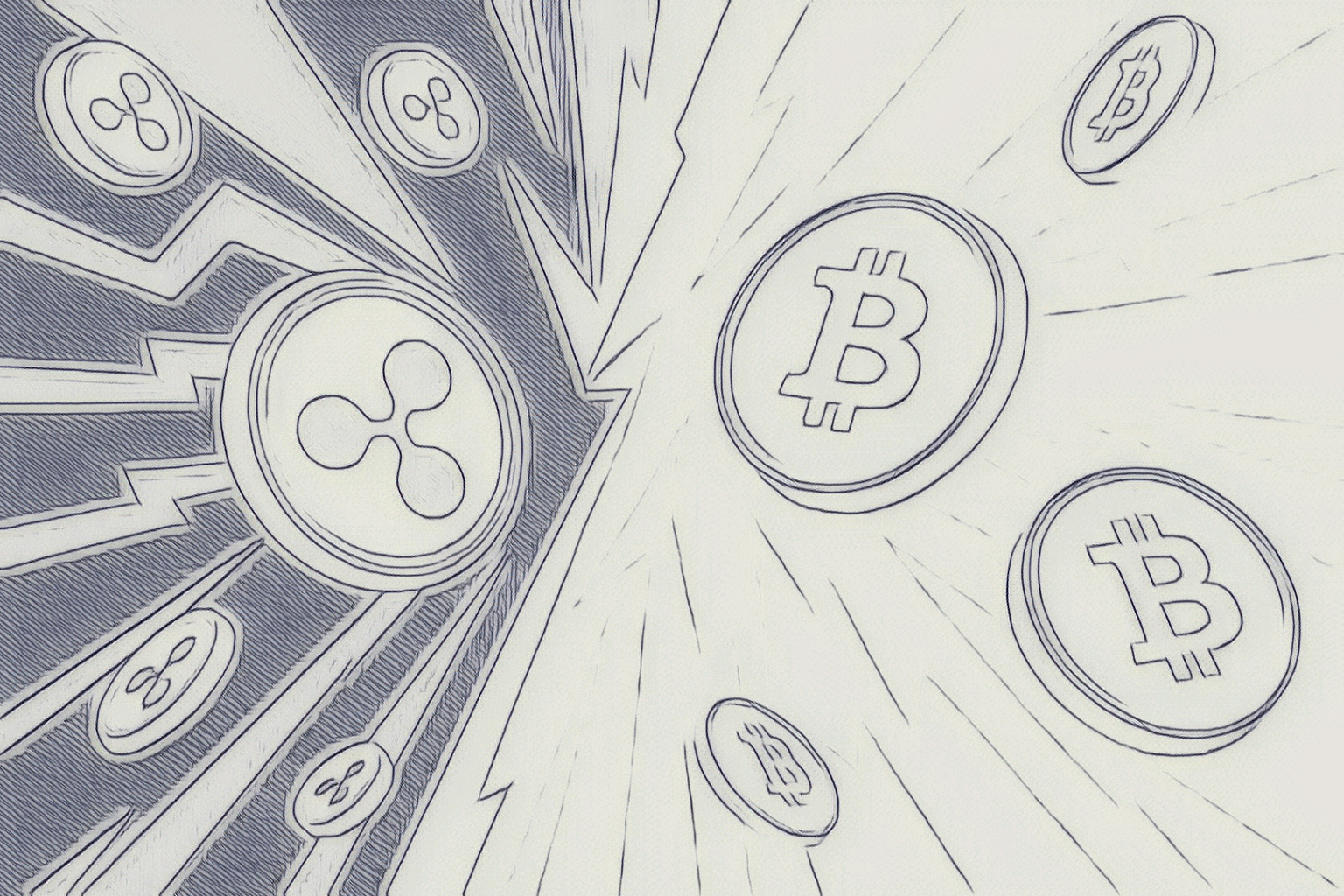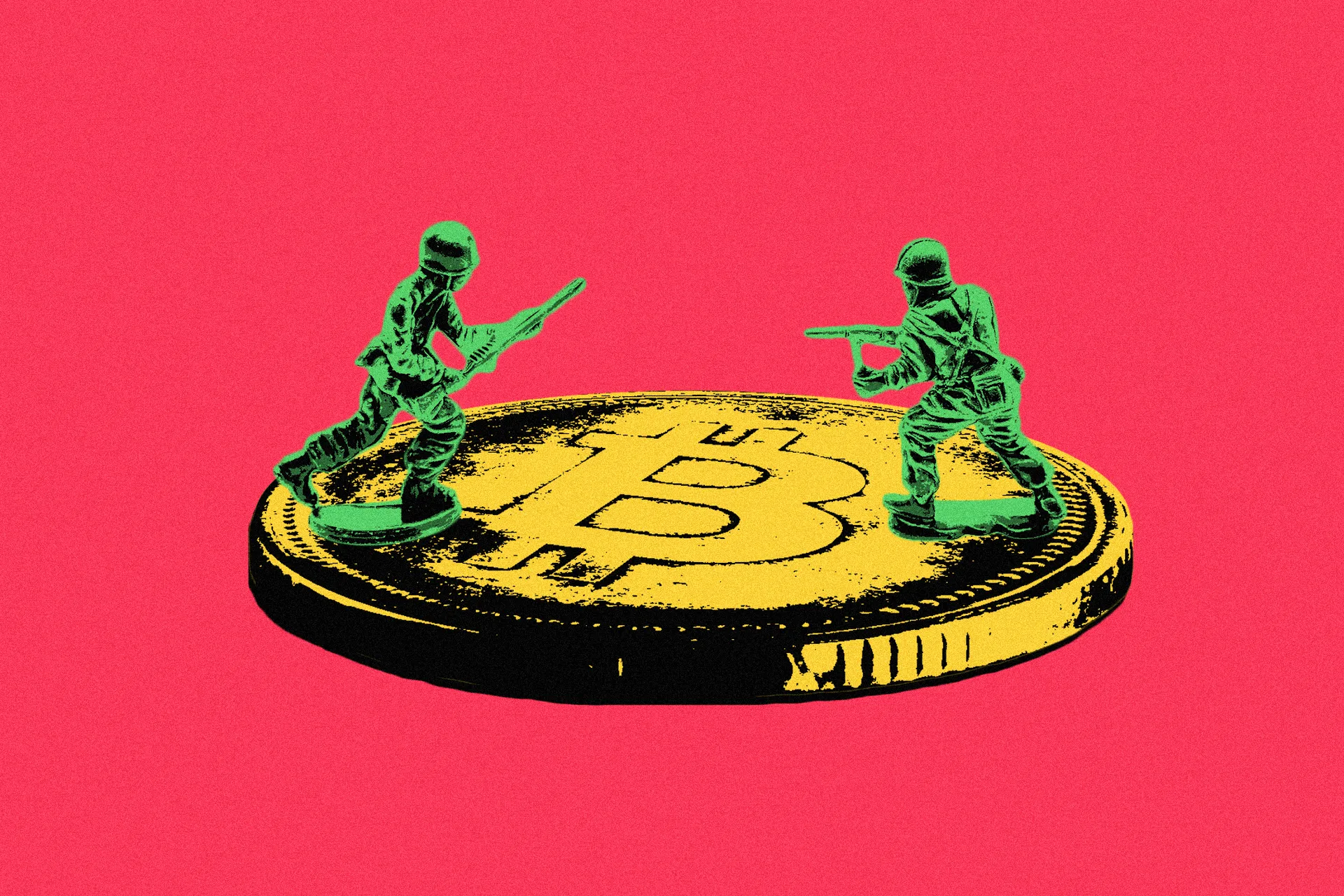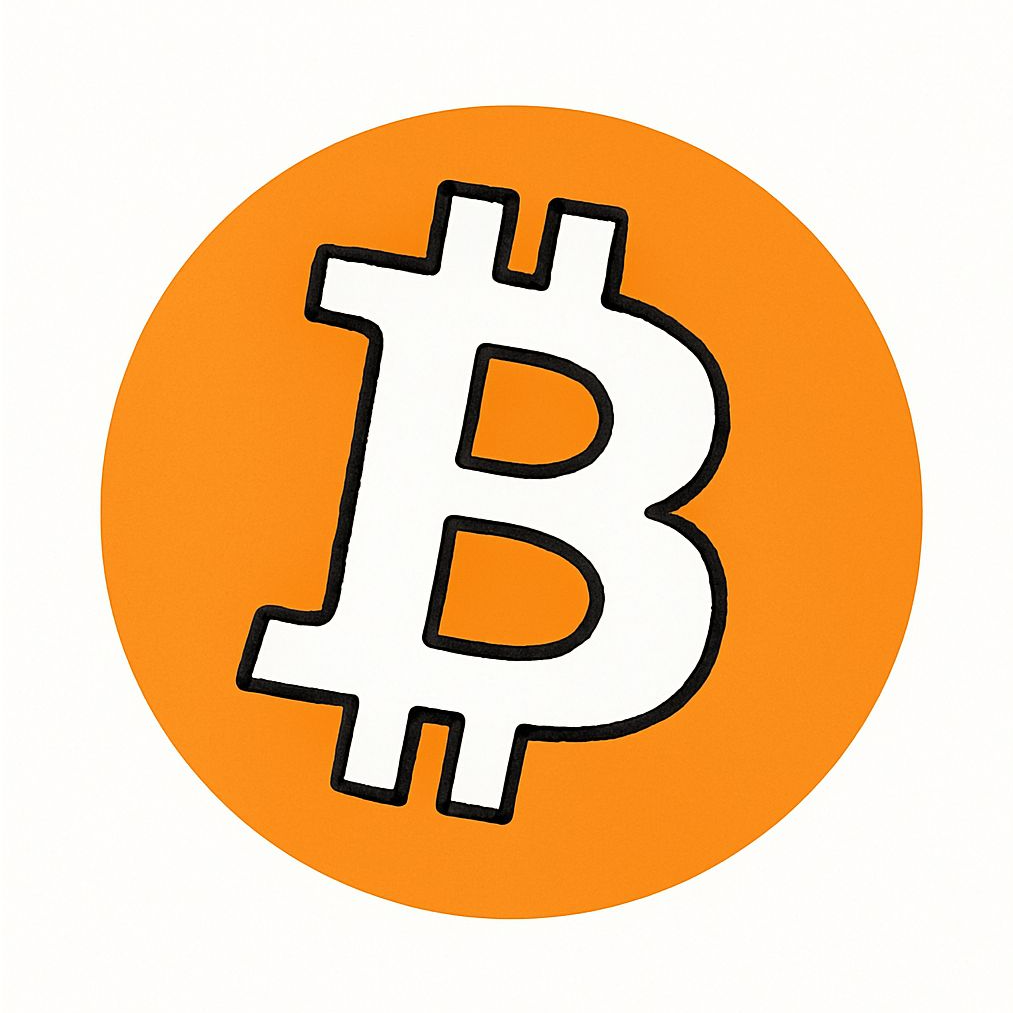The Flippening

I. The Church of Satoshi
By 2025, the Bitcoin community had become something like a monastery built on a mountain of code—sacred, immovable, humming with the conviction of early believers. Their robes were denim, their candles were GPU rigs. They called it digital gold, and like gold, it just sort of sat there. Majestic. Heavy. Shiny, but static. You didn’t buy coffee with gold. You didn’t buy lunch with Bitcoin either—not unless you were a masochist with a passion for scanning QR codes and waiting eight minutes in silence while the guy behind you at the food truck muttered about “normies.”
Still, Bitcoiners held the line. They carved their identities into its immutable blocks. They said, store of value with the same reverence that 12th-century monks said divine grace. BTC was the first, and therefore—they claimed—the best. But underneath the surface, cracks had started to form, hairline fractures in the great digital cathedral.
It wasn’t that Bitcoin had failed. No, it had won—in a kind of calcified, Nixon-on-the-dollar kind of way. But the world had changed. And somewhere in the undercurrents of that change, a storm was gathering.
II. The Ripple in the Stream
It started quietly—as all chosen ones do.
XRP, born of the Ripple protocol, had long been misunderstood. Too corporate for the cypherpunks. Too centralized for the anarcho-libertarians. Not volatile enough for the speculators. But what XRP lacked in drama, it made up for in one essential feature:
It worked.
It moved money. Fast. Cheap. Consistently. Not just theoretical money—real money. Central banks poked at it. Payment corridors ran on it. It was less a “coin” and more a quiet infrastructure, like fiber optic cables or oxygen—not sexy, but existential.
At first, the XRP community was the butt of jokes on Twitter. They were mocked with memes: “XRP is for banks,” “XRP is a stablecoin in denial.” But the Ripple crowd didn’t flinch. They weren’t building for likes. They were building for settlement.
Then came 2027. The year the world got weird.
III. The Gridquake
A series of high-frequency cyberattacks—"Gridquake" events—began crashing regional networks. Centralized payment rails jittered, then stuttered, then fell. The VisaNet backbone faltered during holiday season. FedNow hiccupped. Even Ethereum—the rising DeFi darling—suffered congestion migraines as gas fees skyrocketed to laughable levels.
Bitcoin? It stood still. Unhacked, yes—but also unhelpful. Its blocks ticked away every ten minutes like a metronome inside a tomb. Miners in remote parts of Kazakhstan kept the lights on, but nobody could get a transaction through for less than $50. Lightning Network? Still in beta by spirit. Still “just around the corner.”
Enter XRP.
In a surprise move that only made sense in hindsight, a coalition of fintech firms, remittance giants, and three central banks quietly flipped the switch. RippleNet, with On-Demand Liquidity powered by XRP, absorbed the overflow. Transactions that were frozen mid-pipeline began moving. Whole economies resumed breathing.
Suddenly, XRP wasn’t just useful—it was necessary.
IV. The Flippening
The phrase had been whispered for years—“the Flippening”—used like a campfire tale to scare Bitcoin maximalists. It had always been a joke. Then it wasn’t.
The numbers began to shift. At first, slowly. Then daily. Then hourly. XRP, long mocked as the underdog alt, slipped past Ethereum. Then, in a moment that would be memorialized in a thousand TikToks and a dozen documentaries, XRP’s market cap overtook Bitcoin’s.
Bitcoiners were outraged. They wrote essays. Podcasts. Manifestos. They talked about decentralization, about purity, about the “real vision” of Satoshi. But the world wasn’t listening anymore. The world had moved on.
Because money—real money—doesn’t care about your philosophy. It just wants to move.
V. The New Cathedral
By 2030, Bitcoin still existed. Of course it did. Like a holy relic in a museum. Revered. Untouched. Valuable in the way that a Van Gogh is valuable—emotionally rich, but not exactly liquid.
But XRP was the bloodstream now. Micropayments flowed like capillaries under the surface of everything—invisible, instant, assumed. Whether you were tipping a content creator in Manila or settling an oil trade in the Gulf, it was XRP behind the scenes. Swift was a fossil. Even stablecoins rode shotgun.
And the XRP community—long disciplined by exile—didn’t gloat. They didn’t say “I told you so.” They just kept building. Bridges. Corridors. Interoperability. A new monetary layer, silently threading together a fragmented world.
Epilogue: A Quiet Revolution
In a forgotten corner of the internet, someone unearthed an old Bitcoin meme: “XRP is a banker’s coin.”
And someone else replied, simply:
“No. XRP is everyone’s coin now.”
The world hadn’t chosen XRP because it was perfect. It had chosen it because, when the time came, it moved.
And in the age of endless noise, movement was the only truth that mattered.




